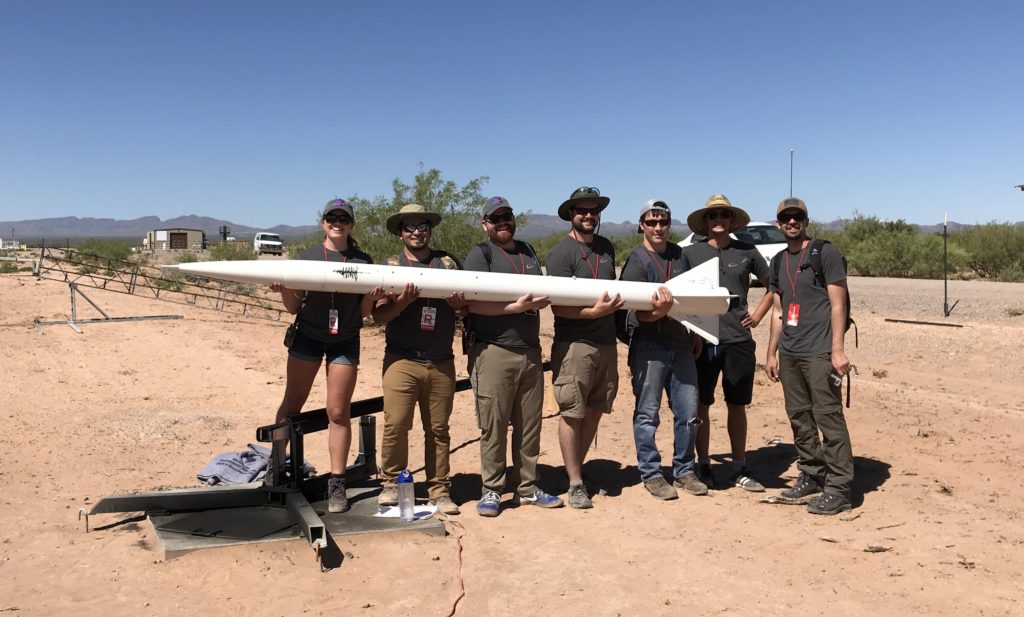WSU Vancouver Aerospace Club built a high-powered rocket that flew over 14,000 feet during the Spaceport America Cup last June.
The Spaceport America Cup was created by the Intercollegiate Rocket Engineering Competition (IREC), taking place in southern New Mexico. The event hosts a variety of teams from universities across the nation as well as 11 countries.
According to the National Fire Protection Association (NFPA), a high-powered rocket weighs over 1,500 grams and has a motor weight of more than 125 grams. However, the high-powered rocket used in these competitions vary.
“When people say ‘high-powered rockets’ they usually don’t think as large a scale as we are building. Our rocket for this year was 10 feet and 3 inches long,” said Monique Embury, former president of the WSU Vancouver Aerospace Club.
Embury said WSU Vancouver students formed the club because of their interest in aerospace engineering. Since the start of the club two years ago, members were determined to build a high-powered rocket and compete at a national level. Some of the club’s founding members had transferred from universities that already had Aerospace Club’s and brought their interests to the WSU Vancouver campus. The team wanted to show they could build and compete alongside teams from larger campuses. The club built a 10-foot rocket capable of ranking in Spaceport America Cup 2018, which was the team’s first ever competition. The rocket had many custom/hand-built parts students contributed as part of their senior projects.
The club used their knowledge in various fields to build the rocket and make it stable. Seven students from the club took the 36-hour drive to launch their rocket in the hot New Mexico desert.
Per competition guidelines, the rocket must be disassembled and then built on the launch pad on the day of the competition. The WSU Vancouver Aerospace Club rocket had a motor capable of going over 10,000 feet high.
“Building the rocket was a challenge itself…but we flew it. The target was 10,000 feet, it actually flew to 14,000 feet,” said Embury.

This was no small feat for the team of seven, as they competed alongside larger teams with big sponsors. According to Embury some of the competing teams had over 50 members. Meanwhile, the WSU Vancouver Aerospace Club hosted fundraising events in order to raise money for materials to build the rocket. Additionally, the club requested funds from the Associated Students of Washington State University Senate. The ASWSUV Senate funding paid for the admission to the competition, according to Embury.
“Without everybody’s generous help, from the school or local companies, we would not be able [to build the rocket]. It was a wonderful learning experience,” Embury said.
The club is now advised by Embury as she studies for her masters of science in mechanical engineering at WSU Vancouver. The current Aerospace Club president, Brian Huntley, also has plans to take the club to new heights. Huntley said the club is expecting to take part in the Spaceport America Cup 2019 and hopes to fly their rocket to an altitude of 30,000 feet.
The club hopes their achievements at the Spaceport America Cup can help them grow in size this year, both in members and funding.

1 thought on “For the Aerospace club, the sky is the limit”